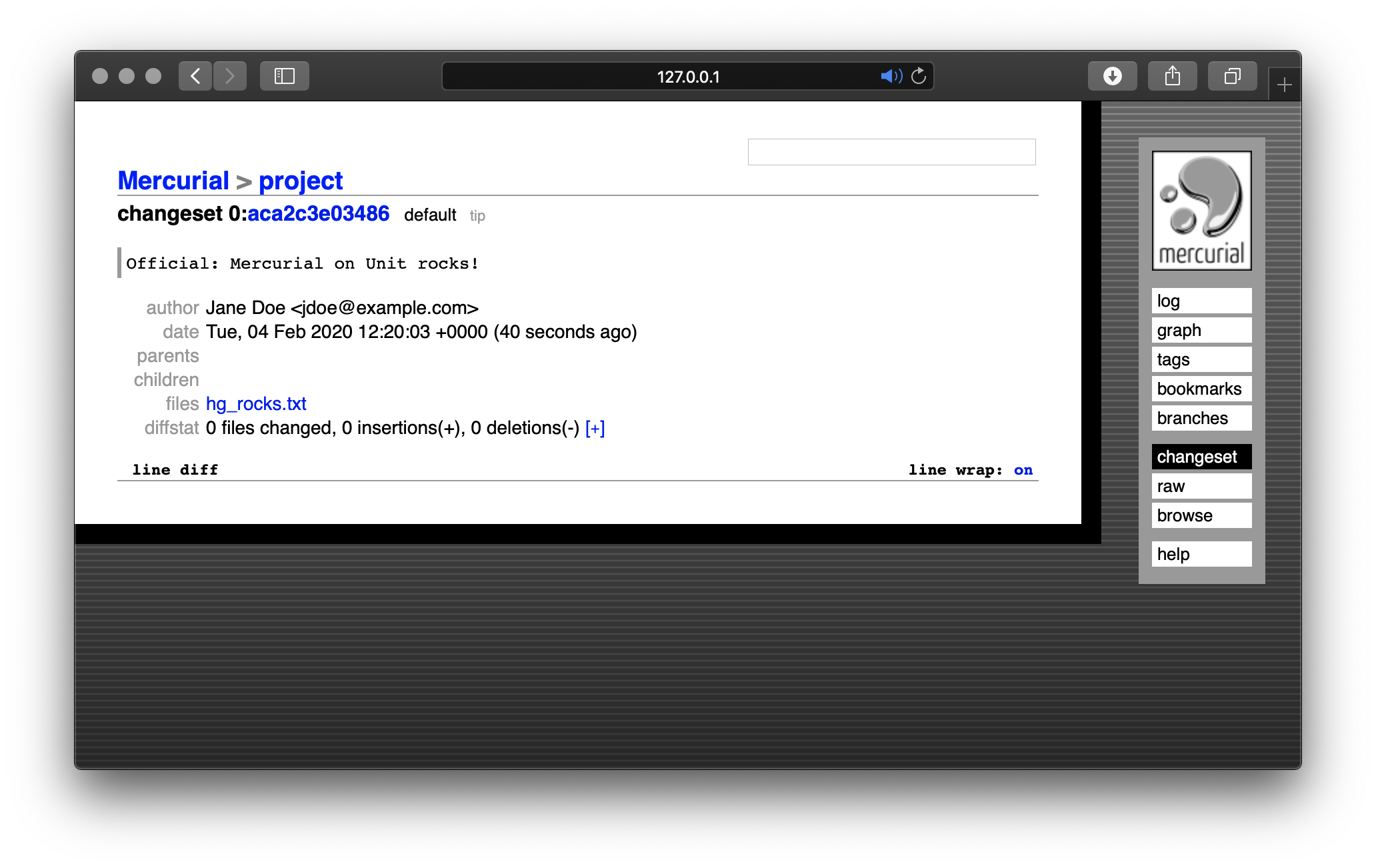Mercurial§
To install and run the Mercurial source control system using Unit:
Install Unit with a Python language module.
Install Mercurial’s core files. Here, we install it at /path/to/app/; use a real path in your configuration.
Optionally, configure a repository or choose an existing one, noting its directory path.
Unit uses WSGI to run Python apps, so it requires a wrapper script to publish a Mercurial repo. Here, it’s /path/to/app/hgweb.py (note the extension); the application callable is the entry point:
from mercurial.hgweb import hgweb # path to a repo or a hgweb config file to serve in UTF-8 (see 'hg help hgweb') application = hgweb("/path/to/app/repo/or/config/file".encode("utf-8"))
This is a very basic script; to elaborate on it, see the Mercurial repo publishing guide.
Run the following command (as root) so Unit can access the application directory:
# chown -R unit:unit /path/to/app/
Note
The unit:unit user-group pair is available only with official packages, Docker images, and some third-party repos. Otherwise, account names may differ; run the ps aux | grep unitd command to be sure.
For further details, including permissions, see the security checklist.
Next, prepare the Mercurial configuration for Unit (use a real value for path):
{ "listeners": { "*:80": { "pass": "applications/hg" } }, "applications": { "hg": { "type": "python", "path": "/path/to/app/", "module": "hgweb" } } }
Upload the updated configuration. Assuming the JSON above was added to
config.json. Run the following command as root:# curl -X PUT --data-binary @config.json --unix-socket \ /path/to/control.unit.sock http://localhost/config/
Note
The control socket path may vary; run unitd -h or see Startup and Shutdown for details.
After a successful update, you can proceed to work with your Mercurial repository as usual:
$ hg config --edit
$ hg clone http://localhost/ project/
$ cd project/
$ touch hg_rocks.txt
$ hg add
$ hg commit -m 'Official: Mercurial on Unit rocks!'
$ hg push
